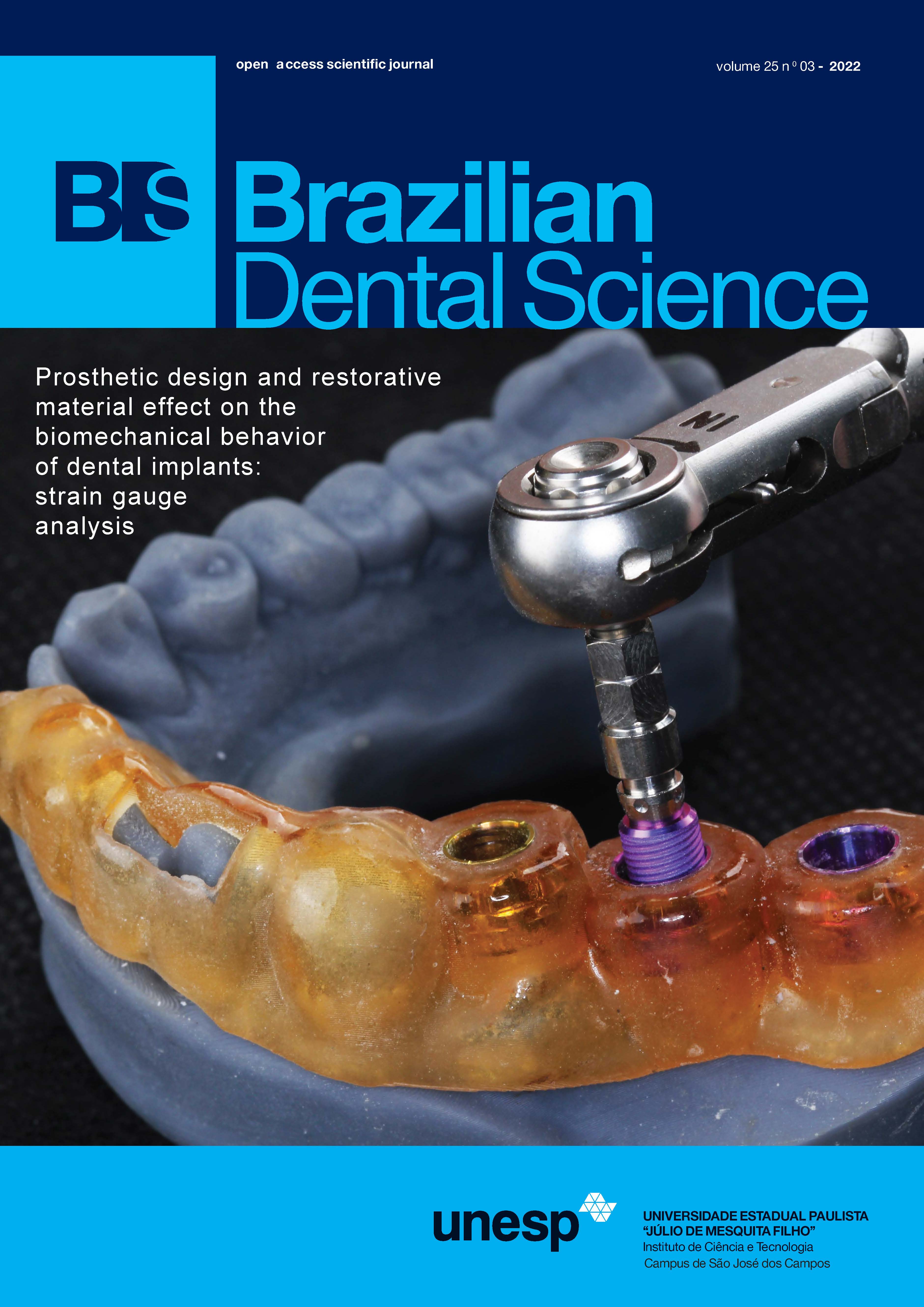Association of matrix metalloproteinase-1-1607 1G/2G single nucleotide polymorphism genotypes with periodontitis in Iraqi population
DOI:
https://doi.org/10.4322/bds.2022.e3283Abstract
Objective and background: Periodontitis is an inflammatory disease which is characterized by a progressive loss
in the matrix of soft and hard tissue of periodontium particularly the collagen fibers which are cleaved by matrix
Metalloproteinase (MMP). Indeed, increased activity of MMP mediates progression of periodontal diseases but
population-based genetic variations could determine the susceptibility to the disease. The aim was to investigate
association between MMP-1-1607 polymorphism with periodontitis among Iraqi individuals. Subjects and
methods: The design of this study was a case-control for Iraqi individuals who were divided into two groups;
periodontitis group (cases) and those with healthy periodontium (Control). For each subject, clinical periodontal
parameters and demographic characteristics were recorded and venous blood was withdrawn for genetic analysis
of MMP-1 by using PCR technique and DNA sequencing. Results: Analysis of MMP-1-1607 genotypes, by Hardy-
Weinberg equilibrium, showed significant differences in the total sample. The most predominant MMP-1-1607
genotype among Controls was 1G/2G which was significantly different from periodontitis cohorts. Overall, 13
SNP were detected in periodontitis group versus 17 SNP in Control group. In addition, the periodontitis group
showed a significant negative association between the probing pocket depth and MMP-1-1607. Conclusion:
Results suggested that polymorphisms in MMP-1-1607 1G/2G may play a protective role and decreasing the
susceptibility to periodontitis.
KEYWORDS
Periodontitis; Polymorphism; Single nucleotide; Genotype; Matrix metalloproteinase 1.
Downloads
Downloads
Published
How to Cite
Issue
Section
License
Brazilian Dental Science uses the Creative Commons (CC-BY 4.0) license, thus preserving the integrity of articles in an open access environment. The journal allows the author to retain publishing rights without restrictions.
=================




























